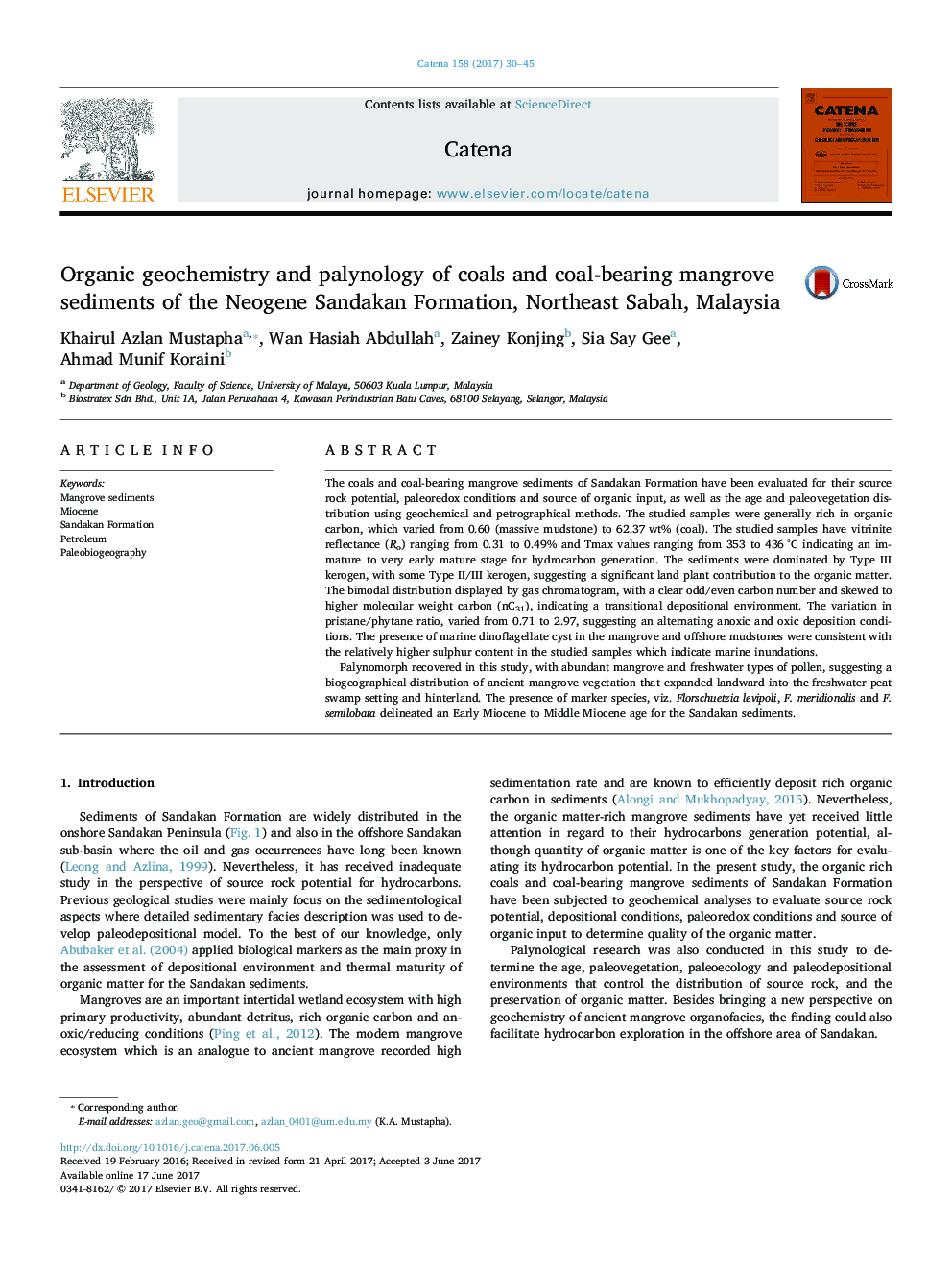| کد مقاله | کد نشریه | سال انتشار | مقاله انگلیسی | نسخه تمام متن |
|---|---|---|---|---|
| 5769888 | 1629196 | 2017 | 16 صفحه PDF | دانلود رایگان |
- The petroleum source rock potential of coal and coal-bearing mangrove sediments were evaluated.
- Geochemical and petrological analyses indicate the source rocks are gas prone with little oil.
- The sediments however are still immature for hydrocarbon generation.
- Palynology analysis indicates abundant mangrove pollen assemblages.
- The occurrence of mangrove marker species delineates Early Miocene to Middle Miocene age.
The coals and coal-bearing mangrove sediments of Sandakan Formation have been evaluated for their source rock potential, paleoredox conditions and source of organic input, as well as the age and paleovegetation distribution using geochemical and petrographical methods. The studied samples were generally rich in organic carbon, which varied from 0.60 (massive mudstone) to 62.37 wt% (coal). The studied samples have vitrinite reflectance (Ro) ranging from 0.31 to 0.49% and Tmax values ranging from 353 to 436 °C indicating an immature to very early mature stage for hydrocarbon generation. The sediments were dominated by Type III kerogen, with some Type II/III kerogen, suggesting a significant land plant contribution to the organic matter. The bimodal distribution displayed by gas chromatogram, with a clear odd/even carbon number and skewed to higher molecular weight carbon (nC31), indicating a transitional depositional environment. The variation in pristane/phytane ratio, varied from 0.71 to 2.97, suggesting an alternating anoxic and oxic deposition conditions. The presence of marine dinoflagellate cyst in the mangrove and offshore mudstones were consistent with the relatively higher sulphur content in the studied samples which indicate marine inundations.Palynomorph recovered in this study, with abundant mangrove and freshwater types of pollen, suggesting a biogeographical distribution of ancient mangrove vegetation that expanded landward into the freshwater peat swamp setting and hinterland. The presence of marker species, viz. Florschuetzia levipoli, F. meridionalis and F. semilobata delineated an Early Miocene to Middle Miocene age for the Sandakan sediments.
Journal: CATENA - Volume 158, November 2017, Pages 30-45
